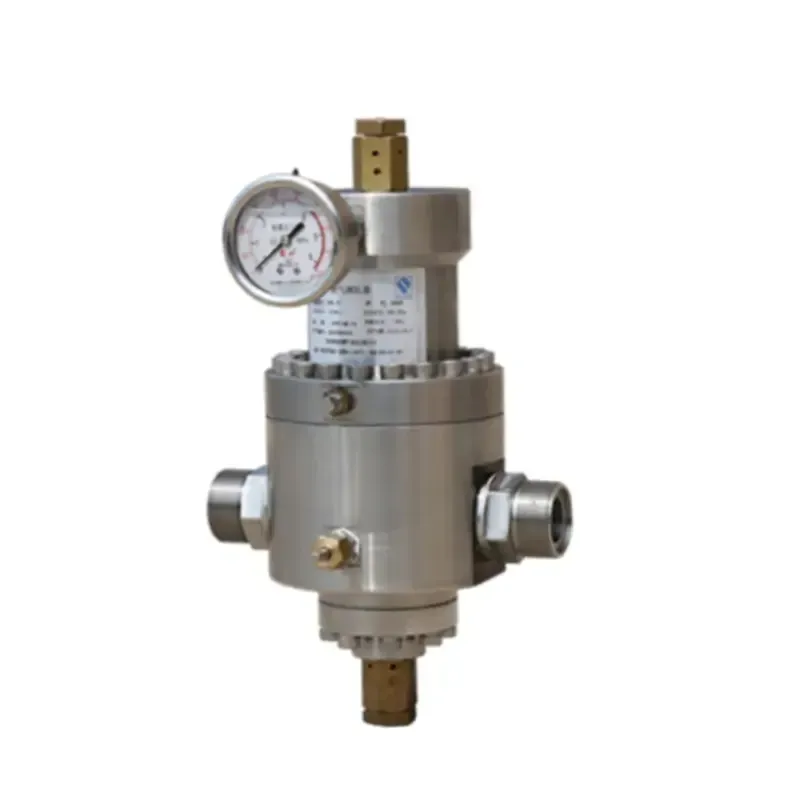
Dec . 12, 2024 10:33
Back to list
pressure vessel
Understanding Pressure Vessels Design, Applications, and Safety
Pressure vessels are critical components in various industrial and engineering applications. These containers, designed to hold gases or liquids at a pressure significantly different from the ambient pressure, are widely used in industries such as oil and gas, chemical manufacturing, power generation, and many others. Understanding the design, applications, and safety measures associated with pressure vessels is essential for the safe and efficient operation of these systems.
Design Considerations
The design of pressure vessels is governed by numerous engineering standards and regulations, such as the ASME Boiler and Pressure Vessel Code in the United States. Key design considerations include the material selection, wall thickness, shape, and the type of pressure (internal or external). Common materials used for pressure vessels include high-strength carbon steels, stainless steels, and sometimes composite materials, depending on the specific requirements of the process and the contents to be stored.
The shape of a pressure vessel is critical as it affects how pressure is distributed across its surface. Cylindrical and spherical shapes are commonly used because they help evenly distribute stress. The wall thickness is determined through calculations based on the maximum expected pressure and temperature conditions to ensure structural integrity and prevent failures.
Applications
Pressure vessels have diverse applications across various industries. In the oil and gas sector, they are used for storing natural gas, crude oil, and other hydrocarbons. Chemical industries utilize pressure vessels for reactors, separators, and heat exchangers, where chemical reactions occur under elevated pressures and temperatures.
pressure vessel

In the power generation field, pressure vessels play a vital role in boilers and steam generators. Nuclear power plants, for instance, utilize pressure vessels to contain nuclear reactions and manage the heat produced. Even in the food and beverage industry, pressure vessels are employed for processes like pasteurization and carbonation.
Safety Considerations
Given the inherent risks associated with pressure vessels, safety is paramount. Failures can lead to catastrophic incidents, including explosions and leaks, posing significant safety hazards to personnel and the environment. Regulations require regular inspections, maintenance, and testing to ensure that pressure vessels remain fit for service.
Pressure relief devices are essential safety components designed to prevent overpressure situations. These devices, such as pressure relief valves, release excess pressure to maintain safe operating conditions. Additionally, pressure vessels undergo rigorous testing, including hydrostatic and pneumatic tests, to confirm their integrity before being put into service.
Furthermore, the implementation of a comprehensive safety management system is critical in the operation of pressure vessels. This involves conducting regular training for personnel, maintaining clear operational procedures, and ensuring that emergency response plans are in place.
Conclusion
Pressure vessels are pivotal in many industrial applications, playing a crucial role in the safe and efficient storage and processing of fluids under pressure. Understanding the design principles, applications, and safety measures associated with these vessels is essential for engineers, operators, and safety professionals. As industries continue to evolve, ongoing advancements in materials, design techniques, and safety protocols will further enhance the reliability and performance of pressure vessels, ensuring they meet both current and future demands.
Next:
Latest news
-
Safety Valve Spring-Loaded Design Overpressure ProtectionNewsJul.25,2025
-
Precision Voltage Regulator AC5 Accuracy Grade PerformanceNewsJul.25,2025
-
Natural Gas Pressure Regulating Skid Industrial Pipeline ApplicationsNewsJul.25,2025
-
Natural Gas Filter Stainless Steel Mesh Element DesignNewsJul.25,2025
-
Gas Pressure Regulator Valve Direct-Acting Spring-Loaded DesignNewsJul.25,2025
-
Decompression Equipment Multi-Stage Heat Exchange System DesignNewsJul.25,2025

